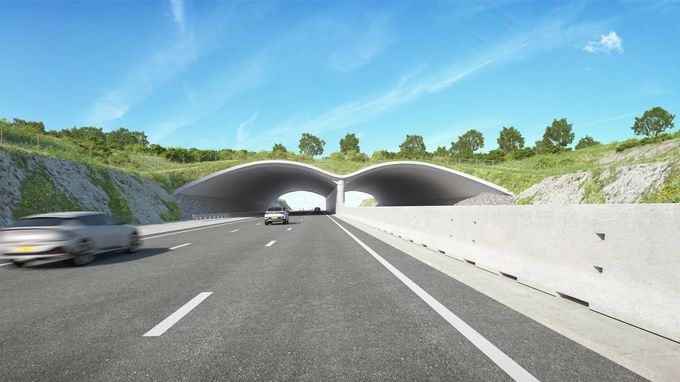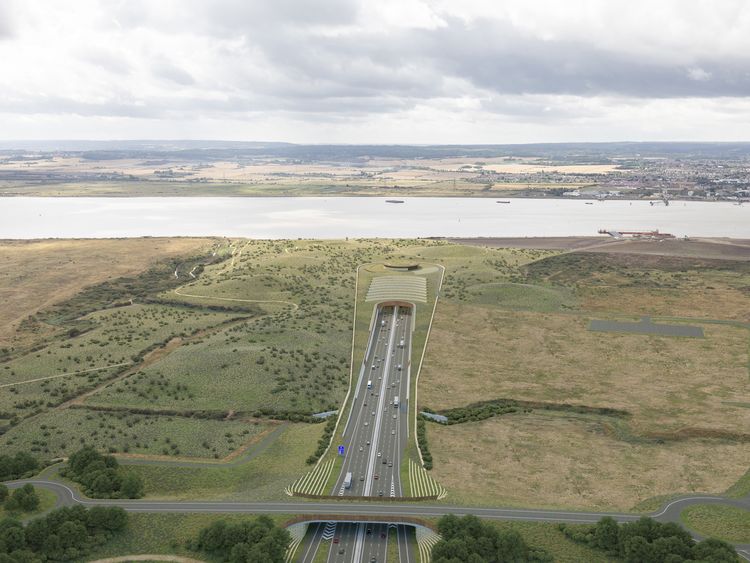
This pre-fabricated bridge, built offsite, is one example of how the project is using lower-carbon construction methods
Making concrete progress with the aid of BSI Flex 350
The use of lower-carbon construction materials will play a crucial role in achieving the LTC’s decarbonisation objectives.
Mark Culbert, technical lead for materials at Murphy Group – one of the main contractors – also spoke at the Carbon Competency Roadshow event. He outlined how the project’s engineering team had been conducting a large-scale laboratory trial of Earth Friendly Concrete, aligning with guidance provided by the BSI Flex 350 code of practice.
Earth Friendly Concrete, developed by Australian company Wagners more than two decades ago, has won several awards for innovation and sustainability. Its binder system contains no Portland cement, the production of which has an extremely large carbon impact. Instead, it relies on a process called alkali activation, which uses two supplementary cementitious materials – ground granulated blast-furnace slag and pulverised fuel ash – with the potential to reduce CO2 emissions by up to 70%. This alkali-activated binder system is not currently included in the BS 8500-1:2023 UK concrete specification standard.
Working with engineering consultants Arup and Mott MacDonald, the team agreed on a series of performance tests to gauge the feasibility of using Earth Friendly Concrete (supplied by Tarmac under the CEVO brand) as an alternative to traditional concrete in the construction of diaphragm walls.
This initial trial proved successful, prompting the LTC to incorporate BSI Flex 350 into its concrete specification, potentially making it the first large-scale infrastructure project in the UK to do so.
The code of practice’s inclusion at this stage should enable the LTC to assess and adopt future alternative binder systems more efficiently. This should in turn facilitate further reductions in carbon emissions as the project continues.
Early decarbonisation wins
Even before the main construction phase, which is expected to start in 2026, the LTC has achieved significant projected carbon savings on its original plan.
Design specifications have been adjusted to incorporate lower-carbon steel as well as concrete, for instance, while survey works in Kent have pioneered the use of a hydrogen-powered digger. The project has committed to eliminating diesel-powered vehicles from its sites by 2027.
National Highways is aiming to achieve more savings by offering financial incentives to partners that exceed their contractual decarbonisation targets and by making further investments in low-carbon innovations.
By promoting the Construction Leadership Council’s Five Client Carbon Commitments, adopting PAS 2080 principles and striving for continuous improvement, the LTC is aiming to be “much better than typical”, Hayes said.
- Amanda Rice is climate programme specialist at the ICE.
- Image credits: National Highways; Fereday Pollard
Sign up to receive news from ICE Knowledge direct to your inbox.







